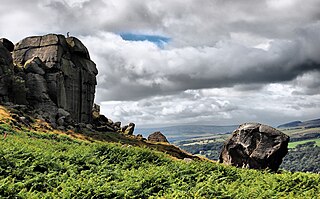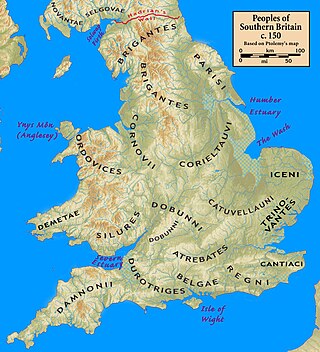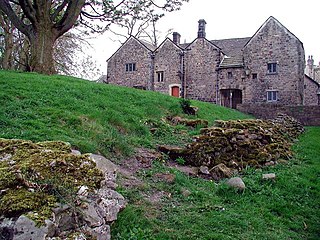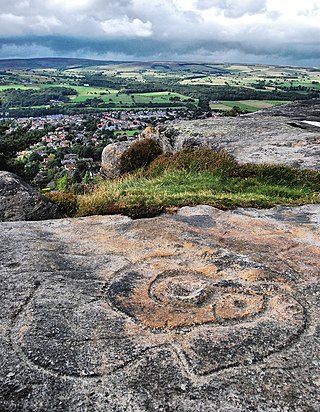Related Research Articles

Erecura or Aerecura was a goddess worshipped in ancient times, often thought to be Celtic in origin, mostly represented with the attributes of Proserpina and associated with the Roman underworld god Dis Pater, as on an altar from Sulzbach. She appears with Dis Pater in a statue found at Oberseebach, Switzerland, and in several magical texts from Austria, once in the company of Cerberus and once probably with Ogmios. A further inscription to her has been found near Stuttgart, Germany. Besides her chthonic symbols, she is often depicted with such attributes of fertility as the cornucopia and apple baskets. She is believed to be similar to Greek Hecate, while the two goddesses share similar names. She is depicted in a seated posture, wearing a full robe and bearing trays or baskets of fruit, in depictions from Cannstatt and Sulzbach. Miranda Green calls Aericura a "Gaulish Hecuba", while Noémie Beck characterizes her as a "land-goddess" sharing both underworld and fertility aspects with Dis Pater.
Belenus is an ancient Celtic healing god. The cult of Belenus stretched from the Italian Peninsula to the British Isles, with a main sanctuary located at Aquileia, on the Adriatic coast. Through interpretatio romana, Belenus was often identified with Apollo, although his cult seems to have preserved a certain degree of autonomy during the Roman period.
Borvo or Bormo was an ancient Celtic god of healing springs worshipped in Gauls and Gallaecia. He was sometimes identified with the Graeco-Roman god Apollo, although his cult had preserved a high degree of autonomy during the Roman period.
Condatis was an ancient Celtic deity worshipped primarily in northern Britain but also in Gaul. He was associated with the confluences of rivers, in particular within County Durham in the North of England. Condatis is known from several inscriptions in Britain and a single inscription found at Alonnes, Sarthe, France. In each case he is equated with the Roman god Mars.

The River Wharfe is a river in Yorkshire, England originating within the Yorkshire Dales National Park. For much of its middle course it is the county boundary between West Yorkshire and North Yorkshire. Its valley is known as Wharfedale.

Ilkley is a spa town and civil parish in the City of Bradford in West Yorkshire, in Northern England. Historically part of the West Riding of Yorkshire, Ilkley civil parish includes the adjacent village of Ben Rhydding and is a ward within the City of Bradford. Approximately 12 miles (19 km) north of Bradford and 17 miles (27 km) north-west of Leeds, the town lies mainly on the south bank of the River Wharfe in Wharfedale, one of the Yorkshire Dales.

Ilkley Moor is part of Rombalds Moor, the moorland between Ilkley and Keighley in West Yorkshire, England. The moor, which rises to 402 m (1,319 ft) above sea level, is well known as the inspiration for the Yorkshire "county anthem" On Ilkla Moor Baht 'at.

The Regni were a Celtic tribe or group of tribes living in Britain prior to the Roman Conquest, and later a civitas or canton of Roman Britain. They lived in what is now Sussex, as well as small parts of Hampshire, Surrey and Kent, with their tribal heartland at Noviomagus Reginorum. The tribe was surrounded on the west by the Belgae, on the north by the Atrebates, and on the east by the Cantiaci.

Ilkley Roman Fort is a Roman fort on the south bank of the River Wharfe, at the centre of the modern town of Ilkley, a Victorian spa town in West Yorkshire, England.

The Lingones were a Gallic tribe of the Iron Age and Roman periods. They dwelled in the region surrounding the present-day city of Langres, between the provinces of Gallia Lugdunensis and Gallia Belgica.
Ricagambeda was a Celtic goddess worshipped in Roman Britain. She is attested in a single inscription, RIB 2107, on an altar stone found at Birrens in what is now Dumfries and Galloway, Scotland. According to the inscription, the altar was raised by men from Vella serving with the Second Cohort of Tungrians in fulfillment of a vow to the goddess. Xavier Delamarre has suggested that her name may be related to the Gaulish word *ricā, meaning ‘sillon’.
In ancient Celtic polytheism, Latis is the name of two Celtic deities worshipped in Roman Britain. One is a goddess, the other a god, and they are both known from a single inscription each.

Brigantia or Brigindo was a goddess in Celtic religion of Late Antiquity.

The Swastika Stone is a stone adorned with a design that resembles a swastika, located on the Woodhouse Crag on the northern edge of Ilkley Moor in West Yorkshire, England. The design has a double outline with four curved arms and an attached S-shape, each enclosing a so-called 'cup' mark, the like of which can be found on other stones nearby.

Moccus is a Celtic god who is identified with Mercury. He is the boar- or swine-god of the continental Celtic tribe of Lingones. Moccus was invoked as the protector of boar hunters and warriors. Boar meat was sacred among the ancient Celts, and features in accounts of feasts in Irish mythology. The Lingones, whose tribal center was at modern-day Langres, were a Gaulish tribe located in the area of the rivers Seine and Marne in what is now northeastern France. They were neighbors to the Celto-Germanic tribe of Treveri. Another tribe known as Lingones was located near the mouth of the Po River in northeastern Italy, and were known for agriculture, weaving and metalworking.
Litavis is a Gallic deity whose cult is primarily attested in east-central Gaul during the Roman period. She was probably originally an earth-goddess. In medieval Celtic languages, various terms derived from *Litauia came to designate the Brittany Peninsula.
According to classical sources, the ancient Celts were animists. They honoured the forces of nature, saw the world as inhabited by many spirits, and saw the Divine manifesting in aspects of the natural world.

Ilkley is a town and civil parish in West Yorkshire, in the north of England. It has been inhabited since at least the Mesolithic period; was the site of a Roman fort, and much later an early example of a spa town. In more recent times it serves as a residential district within the travel to work areas of Bradford, Leeds and Keighley.

Vesunna is a Celtic goddess worshipped in Roman Gaul. She was likely considered a giver of prosperity, abundance and good fortune, as evidenced by the cornucopia she is depicted carrying in her images.
References
- ↑ Dictionary of Celtic Myth and Legend, Miranda J. Green, Thames and Hudson Ltd, 1997
- ↑ Verbeia Archived 2008-09-25 at the Wayback Machine , www.roman-britain.org
- ↑ Cohors Secundae Lingonum Archived 2008-06-06 at the Wayback Machine , www.roman-britain.org
- 1 2 RIB 635 Archived 2008-09-25 at the Wayback Machine , www.roman-britain.org
- ↑ Pagan Celtic Britain, Anne Ross, Routledge & Kegan Paul, 1967, p. 279
- ↑ Pagan Celtic Britain, Anne Ross, Routledge & Kegan Paul, 1967

